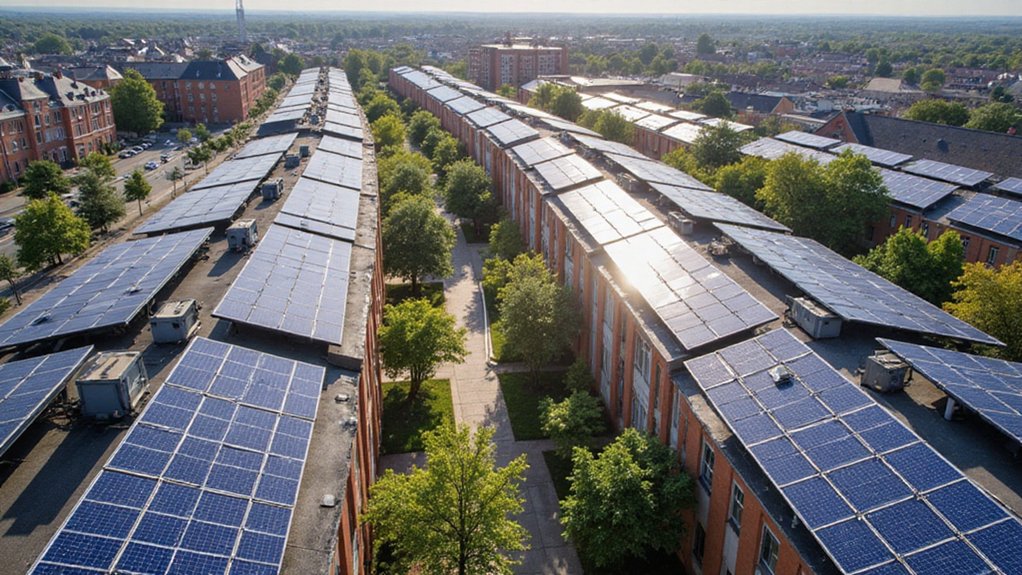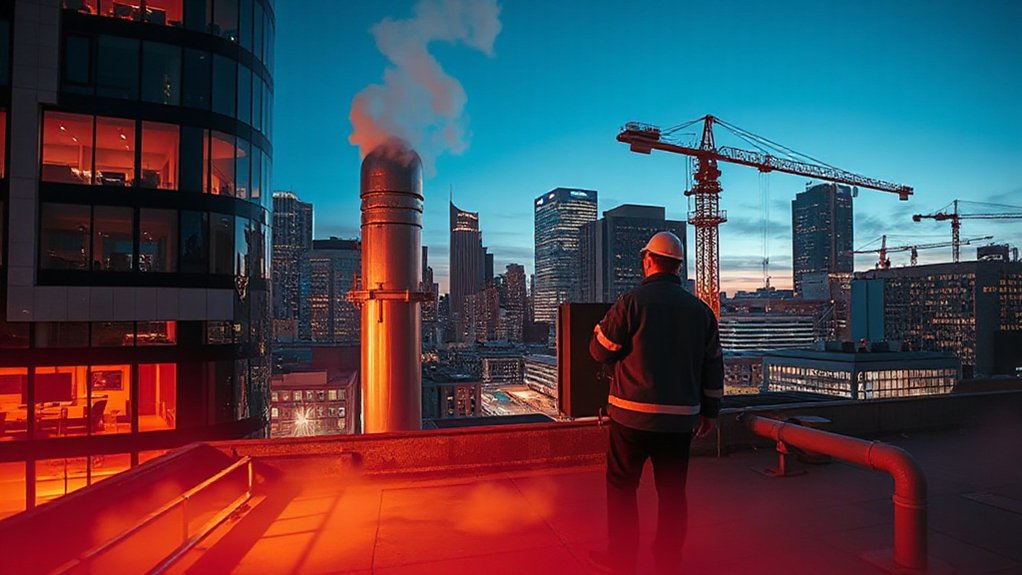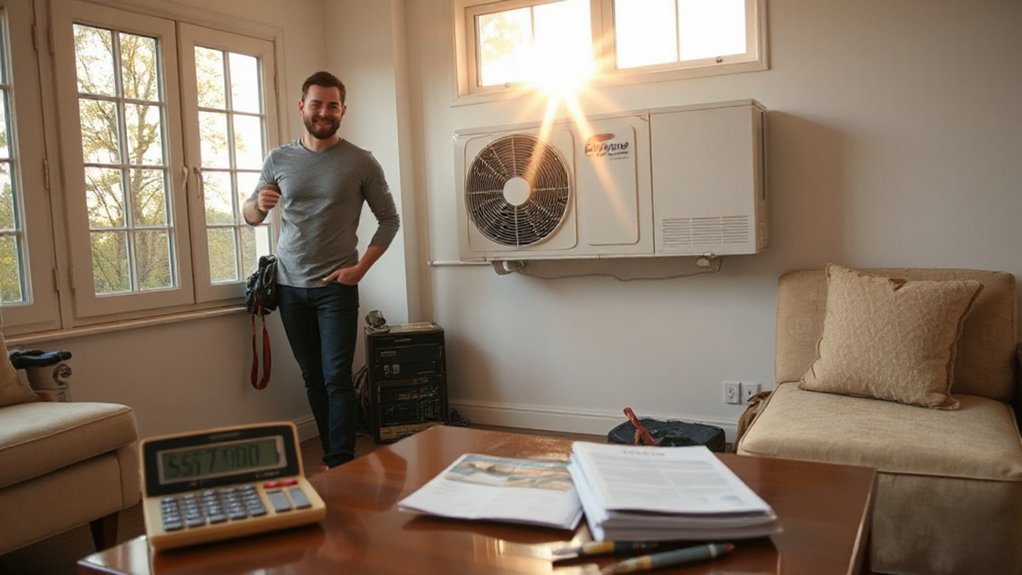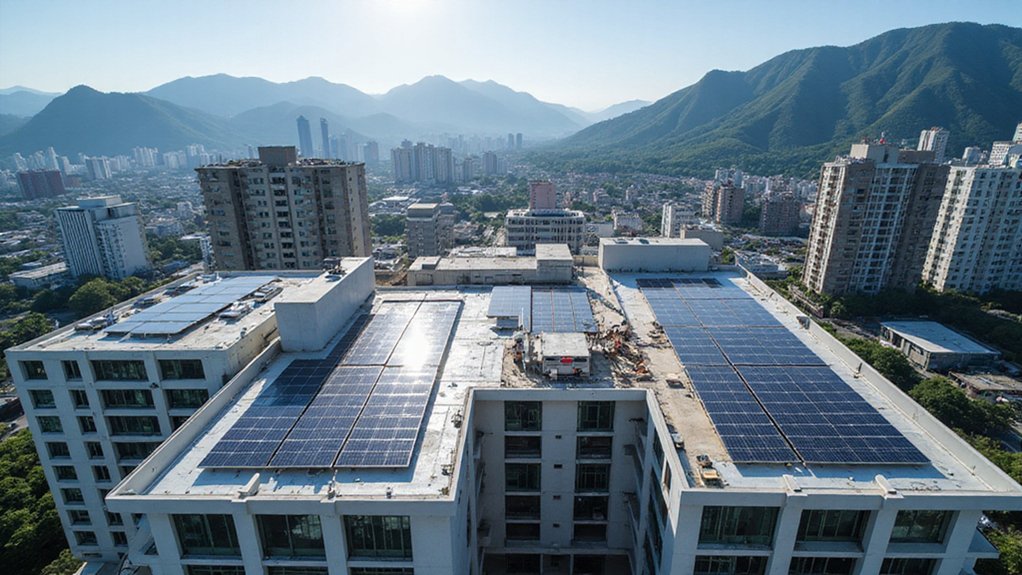A groundbreaking housing district in Dijon, France, has become one of Europe’s most energy-efficient neighborhoods. The development doesn’t just save energy—it actually produces more power than it uses. Located in the Arsenal eco-district, this project transforms a 12.6-hectare former military site into a sustainable community.
The district’s buildings exceed France’s strict energy rules. They’ve achieved energy-positive status, meaning they generate surplus electricity. Each building meets advanced thermal regulations that cut energy use while boosting efficiency. Energy Performance Certificates confirm these high efficiency levels for every residential unit.
Solar panels cover rooftops and building fronts throughout the district. These photovoltaic systems work on both flat and sloped roofs to capture maximum sunlight. The panels produce enough electricity to power all the buildings with energy left over. The district sends this extra power back to the main electrical grid. Similar to commercial solar installations, the district’s system costs about 1.34 per watt to implement but provides long-term energy savings.
This energy success brings major environmental benefits. The district has cut greenhouse gas emissions by 75% compared to typical urban developments. It’s already beaten the European Union’s 2030 carbon reduction target by 55%. The surplus renewable energy helps clean up the wider power grid. Builders also used sustainable materials to reduce carbon emissions during construction.
Residents see real financial benefits from the energy-efficient design. The development includes 59 affordable homes with below-market rental rates. Lower energy costs mean smaller utility bills for families. The project also created over 1,000 square meters of office and retail space, bringing jobs to the area. Properties with better energy ratings now sell for higher prices in Dijon.
Smart technology keeps the buildings running efficiently. Advanced systems control heating, ventilation, lighting, and air conditioning to prevent waste. Residents can monitor and adjust their energy use through mobile applications that connect to smart thermostats. Sensors track indoor conditions and energy use in real-time. The buildings automatically use their own renewable power before turning to backup systems. Staff use this data to spot and fix any energy problems quickly.
The Dijon district shows how cities can fight climate change while providing affordable homes. Its success supports France’s goal to become carbon-neutral by 2050. Other European cities now look to this project as a model for sustainable urban development.
References
- http://faere.fr/pub/WorkingPapers/Baumont_Maslianskaia-Pautrel_Voyé_FAERE_WP2019.20.pdf
- https://www.catella.com/en/germany/news-and-press-releases/press-releases/2021/catella-residential-im-acquires-energy-positive-elithis-tower-in-dijon-as-2.0-bln-impact-project-gathers-pace
- http://task40.iea-shc.org/data/sites/1/publications/DC-TP11-Lenoir-2011-06.pdf
- https://www.rfi.fr/en/france/20250523-france-unveils-its-first-positive-energy-neighbourhood-powering-local-pride
- https://www.euro-ciss.eu/fileadmin/user_upload/Redaktion/Seco@home/nachhaltiger_Energiekonsum/Literatur/OECD-Studie/Report_AE_Scasny-Urban_for_participants_v25May09.pdf









